Wearing high heels or sneakers that are too tight often makes you uncomfortable because of rough, calloused heels and toes. Let's learn with Blog Shondo how to effectively remove and prevent calloused toes from wearing shoes to regain confidence with smooth and healthy feet.
1. Causes of calluses on toes when wearing shoes
Here are some of the main causes of calluses due to wearing shoes:
Wearing shoes that are too tight or too loose: Tight shoes squeeze the toes, while loose shoes cause the feet to slip and have more friction.
- Regularly wearing high heels and pointed-toe shoes: This style puts pressure on the toes, forming calluses over time.
- Choose shoes made from hard, stuffy, non-breathable materials: These materials make your feet sweat, create a humid environment, increase friction and form calluses.
- Genetics, sensitive skin , prone to calluses : Some people have skin that is more prone to calluses when exposed to friction.
- Walking and high intensity exercise: Vigorous activity puts a lot of pressure on the feet, creating more friction between the skin and shoes.
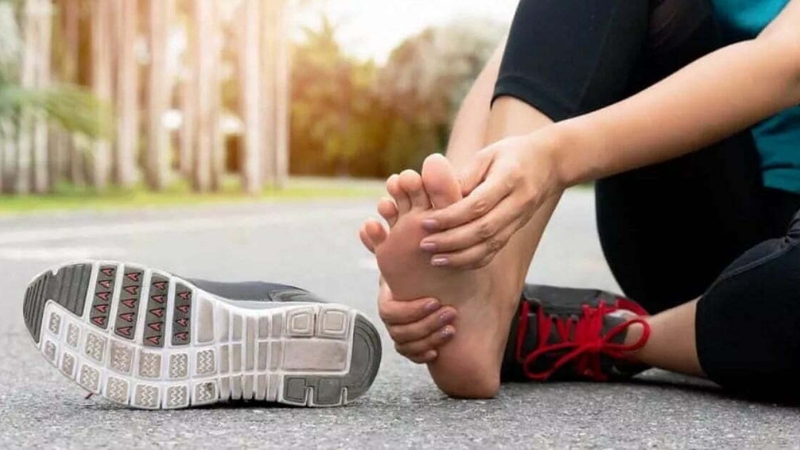 Too much exercise is the reason why you have calluses on your feet[/caption]
Too much exercise is the reason why you have calluses on your feet[/caption]
2. Signs of calluses caused by wearing shoes
Calluses from wearing shoes often appear on areas that are exposed to a lot of pressure, such as the heels, the undersides of the toes, and the sides of the little toe. The skin is usually yellow or gray, and is firmer and rougher than the surrounding skin. When touched, it may feel painful, tender, or numb.
However, hard, rough skin on the feet is not always calluses. Some skin conditions such as athlete's foot, psoriasis... can also cause similar symptoms. You should see a dermatologist for an accurate diagnosis if you notice that the skin on your feet is itchy, flaky, has a foul odor or shows signs of infection.
[caption id="attachment_5296" align="aligncenter" width="800"]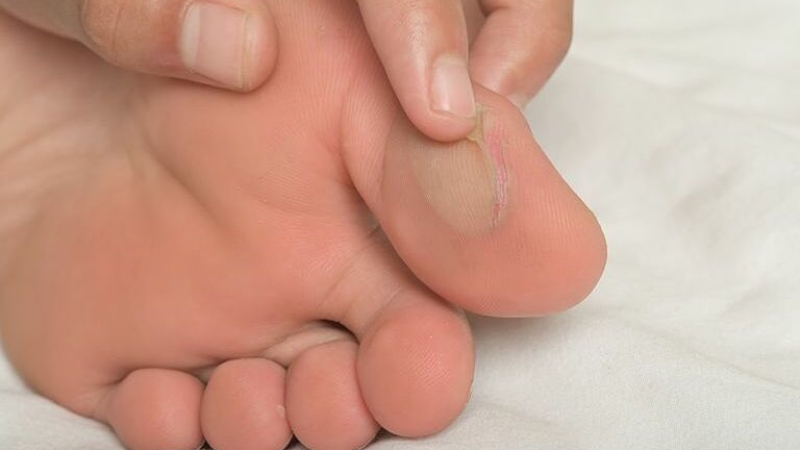 Calluses usually appear on the heels and undersides of the toes[/caption]
Calluses usually appear on the heels and undersides of the toes[/caption]
3. How to treat calluses caused by wearing shoes at home
3.1. Soak feet in warm water
Soak your feet in warm water for about 15-20 minutes to soften the skin and easily remove calluses. You can add a little Epsom salt, crushed ginger or herbs such as green tea or chamomile to the soaking water to increase the relaxing, antibacterial and anti-inflammatory effects.
[caption id="attachment_5297" align="aligncenter" width="800"] Soaking feet in warm water helps soften the skin[/caption]
Soaking feet in warm water helps soften the skin[/caption]
3.2. Use a pumice stone or nail file
After soaking your feet, use a pumice stone or nail file to gently rub the calloused area to remove dead skin. Be careful not to rub too hard as this can damage the skin, cause bleeding, and cause infection.
[caption id="attachment_5298" align="aligncenter" width="800"] You can gently scrub your nails after soaking your feet[/caption]
You can gently scrub your nails after soaking your feet[/caption]
3.3. Moisturize the skin
Moisturizing your feet after exfoliating is an important step in restoring the skin and preventing calluses from coming back. You should choose moisturizers containing urea, salicylic acid or lactic acid, which help soften the skin and gently exfoliate.
[caption id="attachment_5299" align="aligncenter" width="800"] Moisturize your feet to help restore skin[/caption]
Moisturize your feet to help restore skin[/caption]
3.4. Use protective pads
Using silicone or felt insoles in areas where calluses are common will help reduce friction and protect the skin from damage. Choose insoles that are the right size for the location and size of your calluses for best results.
Note:
- Consult your doctor/pharmacist before using any herbal foot bath.
- Stop use and consult a doctor if you experience any irritation.
- If you have tried home remedies but your calluses do not improve, see a dermatologist for advice and timely treatment.
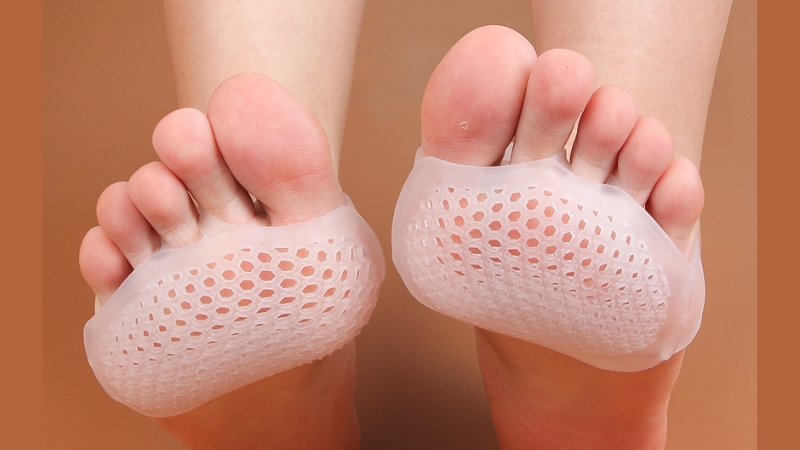 Wear shoes with calluses you can use foot protectors[/caption]
Wear shoes with calluses you can use foot protectors[/caption]
4. Treat foot calluses with medical treatment
In cases where calluses are hard, thick and difficult to treat with natural methods, your doctor may prescribe a topical medication containing salicylic acid, lactic acid or high concentrations of urea to help remove the callus more effectively. However, the use of the medication must follow the doctor/pharmacist's instructions to avoid irritation and ensure skin safety.
For severe cases of calluses that affect daily activities, your doctor may consider more intensive treatments such as laser or surgery to remove the callus. However, these methods are often more expensive and carry some risks, so they should be carefully evaluated by your doctor before being performed.
[caption id="attachment_5301" align="aligncenter" width="800"]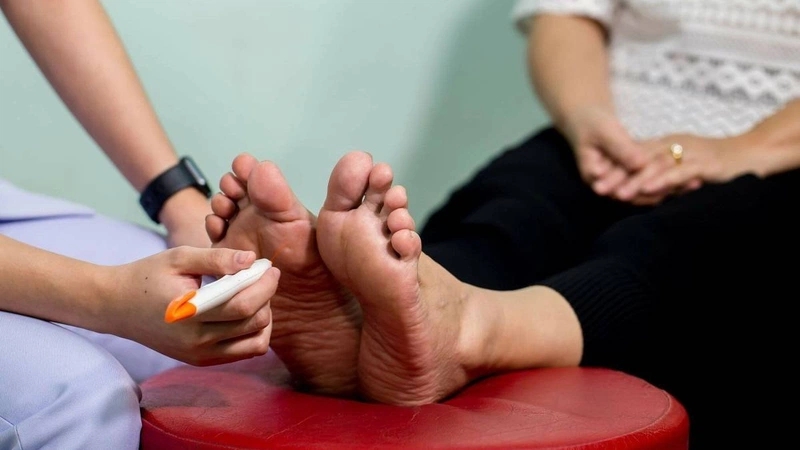 Treating calluses with medical treatment[/caption]
Treating calluses with medical treatment[/caption]
5. Effective tips to prevent calluses from wearing shoes
5.1. Choosing the right shoes
Choosing the right footwear is the most important factor in preventing calluses. Make sure you choose the right size, comfortable fit, not too tight or too loose. In particular, prioritize shoes made from breathable materials such as canvas, suede... to keep your feet dry, limit sweating - the leading cause of calluses.
[caption id="attachment_5302" align="aligncenter" width="800"] You should choose the right shoe size[/caption]
You should choose the right shoe size[/caption]
5.2. Wear socks properly
Wear socks that absorb sweat well, are soft, and help reduce friction between the skin of the feet and the shoes, thereby limiting the formation of calluses. You should choose the type of socks that are suitable for each type of shoe and activity, such as thick sports socks when doing strenuous activities, thin and light socks when wearing ballet flats or loafers.
[caption id="attachment_5303" align="aligncenter" width="800"]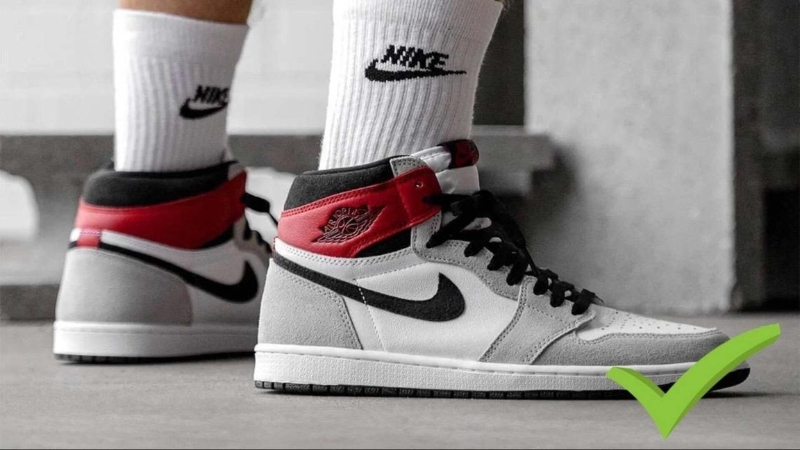 You should wear socks that can absorb sweat well[/caption]
You should wear socks that can absorb sweat well[/caption]
5.3. Regular foot care
You should form a habit of taking care of your feet regularly by cleaning, exfoliating 1-2 times/week and moisturizing your feet daily. In particular, pay attention to drying between your toes after bathing to prevent bacteria and fungi from growing.
[caption id="attachment_5304" align="aligncenter" width="800"]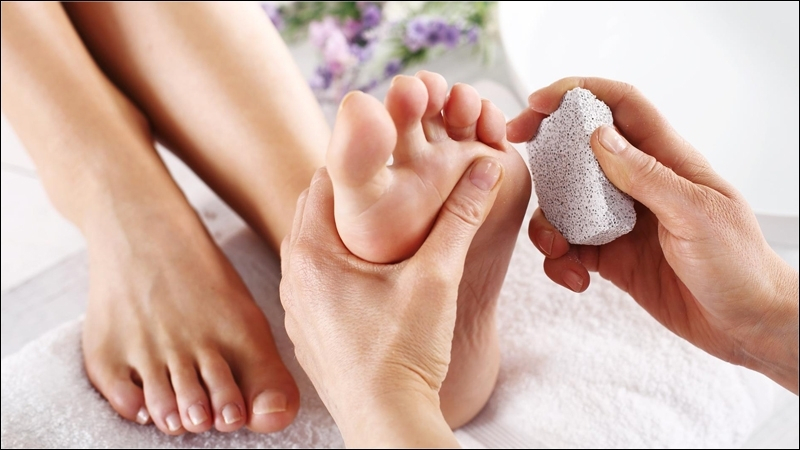 You should clean and exfoliate your feet regularly[/caption]
You should clean and exfoliate your feet regularly[/caption]
5.4. Trim your toenails properly
Trimming your toenails regularly and properly helps reduce pressure on your toes and prevent calluses. Use clean nail clippers, cut your nails straight across, and don’t cut too close to the skin.
[caption id="attachment_5305" align="aligncenter" width="800"]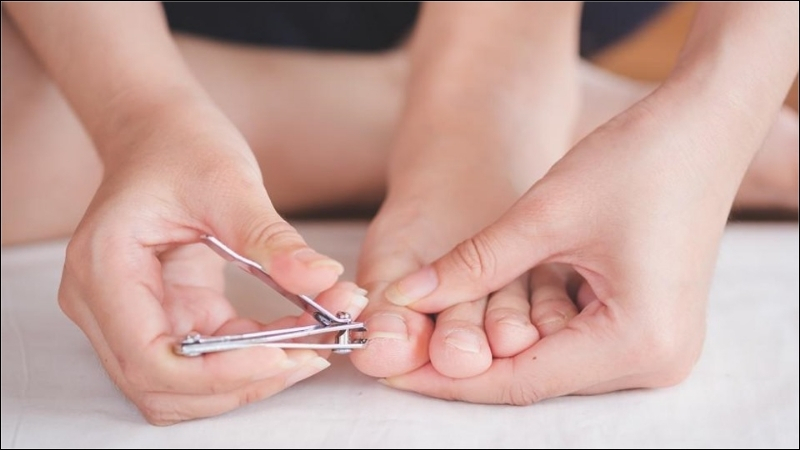 Trimming toenails helps reduce pressure on the toes[/caption]
Trimming toenails helps reduce pressure on the toes[/caption]
6. Questions related to wearing shoes with calluses
6.1. Is it dangerous to wear shoes with calluses?
Calluses caused by wearing shoes are usually not life-threatening but cause many inconveniences in daily life. Prolonged calluses can cause pain and difficulty in moving. In some cases, cracked calluses can create conditions for bacteria to enter and cause infection. Therefore, you should proactively prevent and treat calluses early.
6.2. What should you do when your callus bleeds?
When you have a bleeding callus, you need to:
- Clean the wound with saline.
- Disinfect with povidine.
- Bandage the wound with medical gauze.
- Avoid wearing tight shoes, keep the wound dry and clean.
You should see a doctor if the wound is deep, bleeding heavily, or has signs of infection for timely treatment to avoid dangerous complications.
Hopefully, the useful information in the article on wearing shoes with calluses has helped you better understand the causes, treatment and prevention of calluses effectively. Don't forget to choose the right shoes to protect your feet to stay healthy and beautiful. Visit Shondo now to find yourself a pair of soft, comfortable shoes that will help you move confidently, freely pursue your passion without worrying about calluses!
Related Articles

Nếu bạn đã và đang sở hữu cho mình đôi giày ballet sneaker nhưng vẫn chưa biết outfit nào phù hợp. Xem ngay bài viết này với 5 cách phối đồ với giày ballet sneaker đẹp không có điểm trừ cùng Shondo...

Squid Game 3 chính thức khuấy đảo trên màn ảnh, bạn đã sẵn sàng ngồi liền 6 tập để xem cuộc chiến sinh tồn lần cuối của Gi-Hun chưa? Dưới đây là combo cuối tuần “chuẩn sinh tồn hiện đại” mà Shondo ...

Phong cách Retro là gì mà được nhiều người săn đón như vậy? Cùng Shondo tìm hiểu qua bài viết sau đây để biết thêm nhiều điều thú vị từ điểm đặc trưng cho đến cách phối đồ như thế nào là chuẩn nhé....

Một trong những trào lưu nổi bật gây sốt trên các cộng đồng yêu thời trang chính là phong cách Maillard. Nhưng điều gì khiến chúng lại có sức hút lớn đến như vậy? Shondo sẽ giúp bạn hiểu rõ hơn về...

Áo Polo nữ - item nghe thì tưởng già nhưng thực ra lại đang quay trở lại mạnh mẽ. Từ sân golf đến sân trường, từ văn phòng đến quán cafe, chiếc áo đơn giản với cổ bẻ đặc trưng này bỗng trở nên đa n...
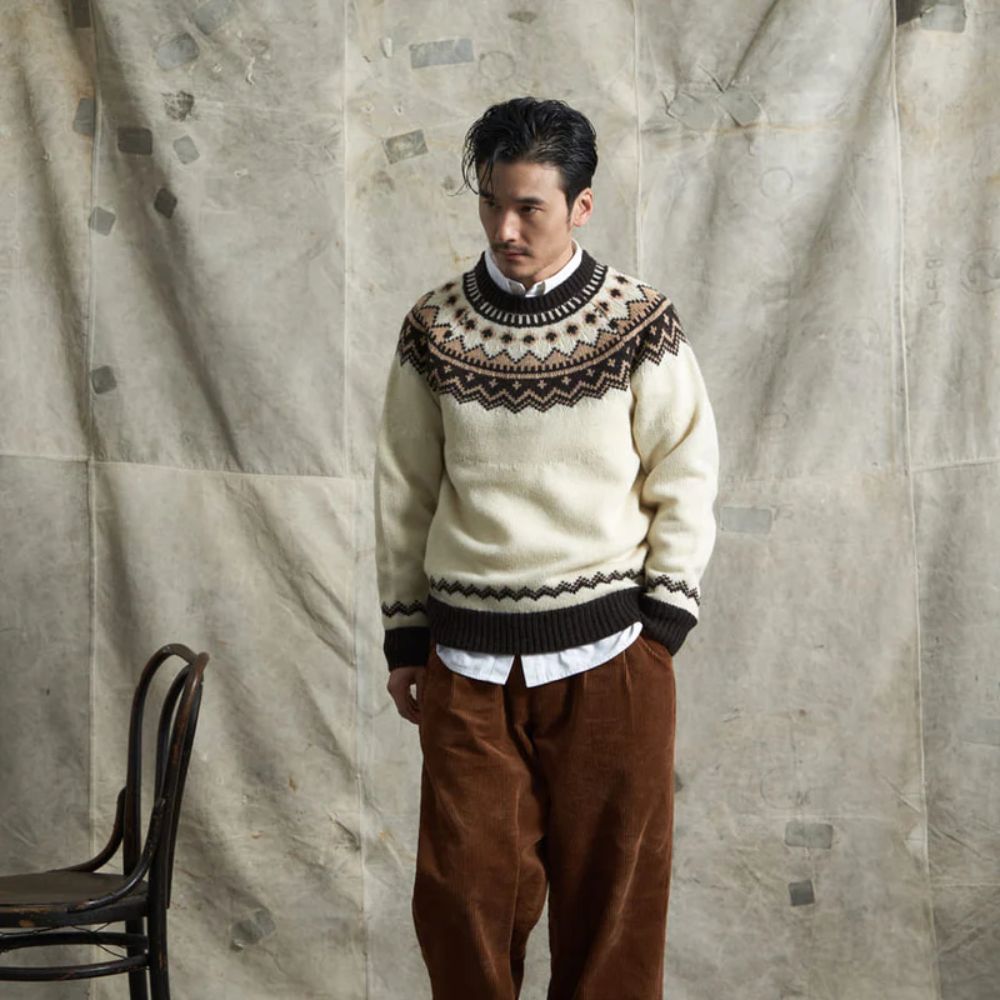
Phối đồ Vintage trong giới thời trang mang đến những nét độc đáo rất riêng. Phong cách này trở thành xu hướng phổ biến không chỉ ở nữ mà còn xuất hiện nhiều ở nam giới. Shondo sẽ cho bạn thấy điều ...

